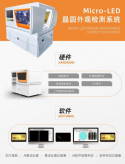VeriSilicon plans to raise no more than 1.8 billion yuan to invest in Chiplet and next-generation IP R&D projects.
VeriSilicon announced on December 23 that the company plans to issue A shares to specific targets to raise a total amount of funds not exceeding 1,808.1569 million yuan (inclusive). The total amount of funds raised this time is after deducting issuance expenses. It will be used in chiplet solution platform research and development projects in the field of AIGC and smart travel, as well as new generation IP research and development and industrialization projects for AIGC, graphics processing and other scenarios.
AIGC and chiplet solution platform research and development project in the field of smart travel
The company's chiplet R&D projects focus on the AIGC Chiplet solution platform and the smart travel chiplet solution platform. The main R&D results are applied to SoCs in the AIGC and autonomous driving fields, and a complete set of software platforms and solutions for related fields have been developed. By developing chiplet technology, the company can maximize the value of its advanced chip design capabilities and semiconductor IP research and development capabilities. Combined with the company's rich mass production services and industrialization experience, it can not only continue to engage in semiconductor IP licensing business, but also upgrade For chiplet suppliers, we can improve the company's IP reusability, effectively reduce the design costs and risks of chip customers, shorten the chip R&D iteration cycle, help chip manufacturers, system manufacturers, Internet manufacturers and other companies to quickly develop high-performance computing chip products and reduce the cost of large-scale computing. The threshold of scale chip design.
New generation IP R&D and industrialization projects for AIGC, graphics processing and other scenarios
Based on existing IP, this project will develop high-performance graphics processor (GPU) IP, AIIP, and a new generation of image signal processor AI-ISP with integrated neural network accelerator for AIGC and data center applications, iterating IP technology, Enrich IP reserves to meet downstream market needs. The implementation of the project will help give full play to the company's existing technical and product advantages, consolidate the company's market position in the industry, expand market share, and lay a solid foundation for the company's sustainable development and expansion.


